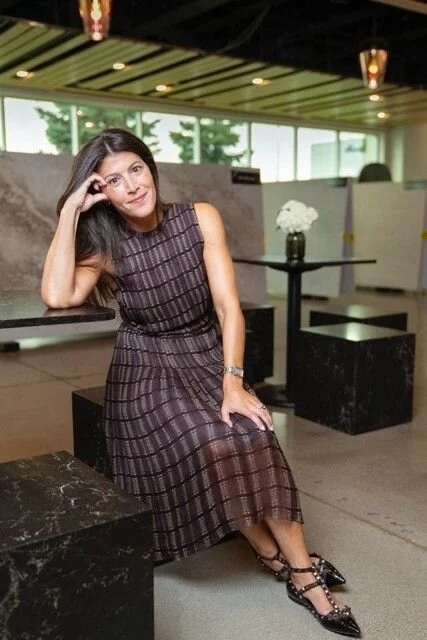Those whose offices are arranged by departments are more likely to strongly agree that the current lack of flexibility in the office layout leads to delays in getting projects out of the door, than those whose offices are arranged in project teams (33 percent vs 17 percent).
7 Reasons Why Remote Work Is the Future of Innovation
Although remote work is more prevalent in the tech-sphere, it can be found in many other industries. If you’re a developer or programmer, you don’t have to waste time looking for a “real” job. You can get gigs through services like Upwork, but you can also work for a specific company.
Amazon’s Search for a Second Headquarters Could Weigh on Seattle’s Growth
Rapid growth at the online retail giant has had a domino effect on Seattle’s economy, helping create one of the strongest real-estate markets in the country.
When Working From Home Doesn’t Work
Our Twentieth Century approach to ergonomics has to change
The legacy of this fixed view is the enduring 20th Century approach based on an idea of desk-bound employees with a computer, whereas the pace of change in technology and working practices means that the relationship between people and place is changing all the time.
Boutique Office Buildings Attract Big-Name Tenants
Distinctive Designs Are Key to Boutique Office Buildings
Why Office Buildings Should Run Like Spaceships
As a profusion of environmental sensors becomes increasingly available, indoor air quality is something building managers can track and manage.
Listen: Creating The Office of Tomorrow With Herman Miller’s Brian Walker
Certain things seem to go out of fashion, only to come around again: suede and velvet clothing for men, vinyl records, the underhanded free throw in basketball. But Brian Walker, the CEO of furniture company Herman Miller, is convinced that the traditional office–with executives stuck behind closed doors and most everyone else assigned to a fixed workstation–is gone for good.
The Office Gets Remade, Again
The new model eschews the common dogmas of work life: Everybody gets an office, or everyone gets a cubicle, or everybody gets a seat on a workbench. A diversity of spaces, experts say, is more productive, and the new concept is called “activity-based workplace design,” tailoring spaces for the kind of work done.
The True Cost of Noise
Airborne sound comprises sound generated within a room and transmitted through the air. Typically, this includes people talking, typing, walking and moving objects; phones ringing; noise from heating, ventilation and air conditioning (HVAC) equipment; printers; and sound/music systems.
Flexible ways of working are definitely on the rise and it suits all ages
NextGen Work is a global phenomenon. Emerging markets like India and Mexico are leading the way with the greatest openness to freelance, contract, temporary or independent contract work (97 percent), with mature markets – including the U.S. (94 percent), with the UK and Australia– close behind (90 and 92 percent respectively). Germany, Netherlands and Japan are more resistant to NextGen Work.
New Talent 2017: Float Studio’s Fresh Approach to Office Design for Start-Ups
Adeptly avoiding the clichés of office design for start-ups, Float Studio instead creates spaces that capture each company’s founding essence—all on a tight budget.
What's driving the Rise of Ancillary Spaces?
Research tells us that the workplaces people want to come to look like the one above—offices with plenty of bright, informal public areas and less space set aside for personal workstations.
When Open Office Works And Doesn't Work For Tech Offices
From open office to bringing the outdoors in, tech companies have long been trendsetters in office design.
Gen-Zers Will Soon Be Your New Hires; Here’s What They Want in a Workplace
Much like the hype around Millennials, the entrance of Gen Z into the workforce promises to once again push boundaries, reshape office design, work style and how companies and buildings themselves seek to remain relevant and competitive in their respective industries and markets.
The current approach to creative workplace design relies on faddish, ineffective ideas
A new research paper published in the Journal of Corporate Real Estate claims that while many organizations are focussed on creating workplaces that foster creativity, the results tend to ignore nuances about what makes people creative and instead focus on faddish ideas and playful, domestic design features to invoke ideas of creativity that may or may not be effective in practice
Listen: The Creative Shift
“Creativity is an inclusive process in which something new emerges,” says Ralf Groene, general manager of Microsoft Devices. “As creativity becomes central to our work, the importance of where we do it is being reaffirmed. The cloud and mobile technologies may be untethering us from the office, but our need and desire to do creative work is luring us back in.”
Choosing the Best Color for Your Office: Green
With the increase in awareness of biophilia, the theory that there is an instinctive bond between humans and nature, today’s workplaces place an emphasis on bringing elements of nature into the office. Research by Steelcase further proves that incorporating green colors can help improve worker wellbeing. Since we often see green naturally in the world, Wasabi’s organic and vibrant qualities have the ability to relax and awaken us. Green symbolizes life and vitality, bringing a breath of fresh air into indoor areas.
Airbnb uses current listings to theme interiors of expanded San Francisco headquarters
Home rental website Airbnb has taken cues from its listings around the world when designing additional office spaces at its headquarters in San Francisco.

























